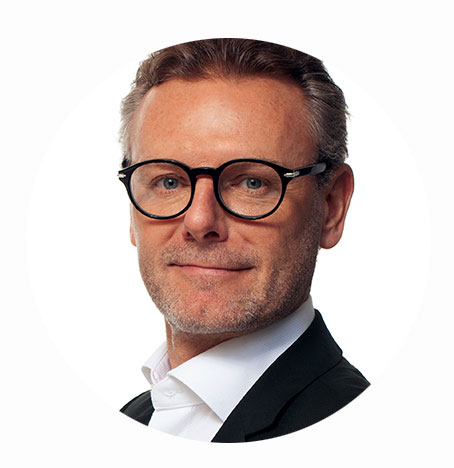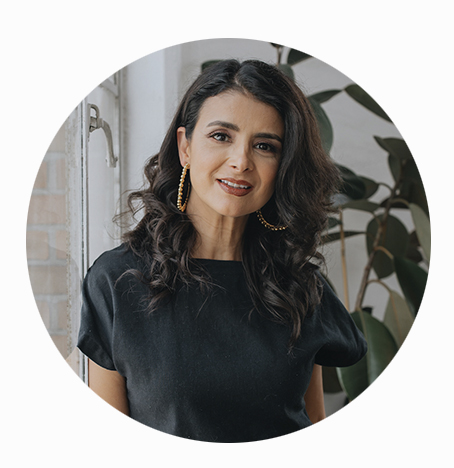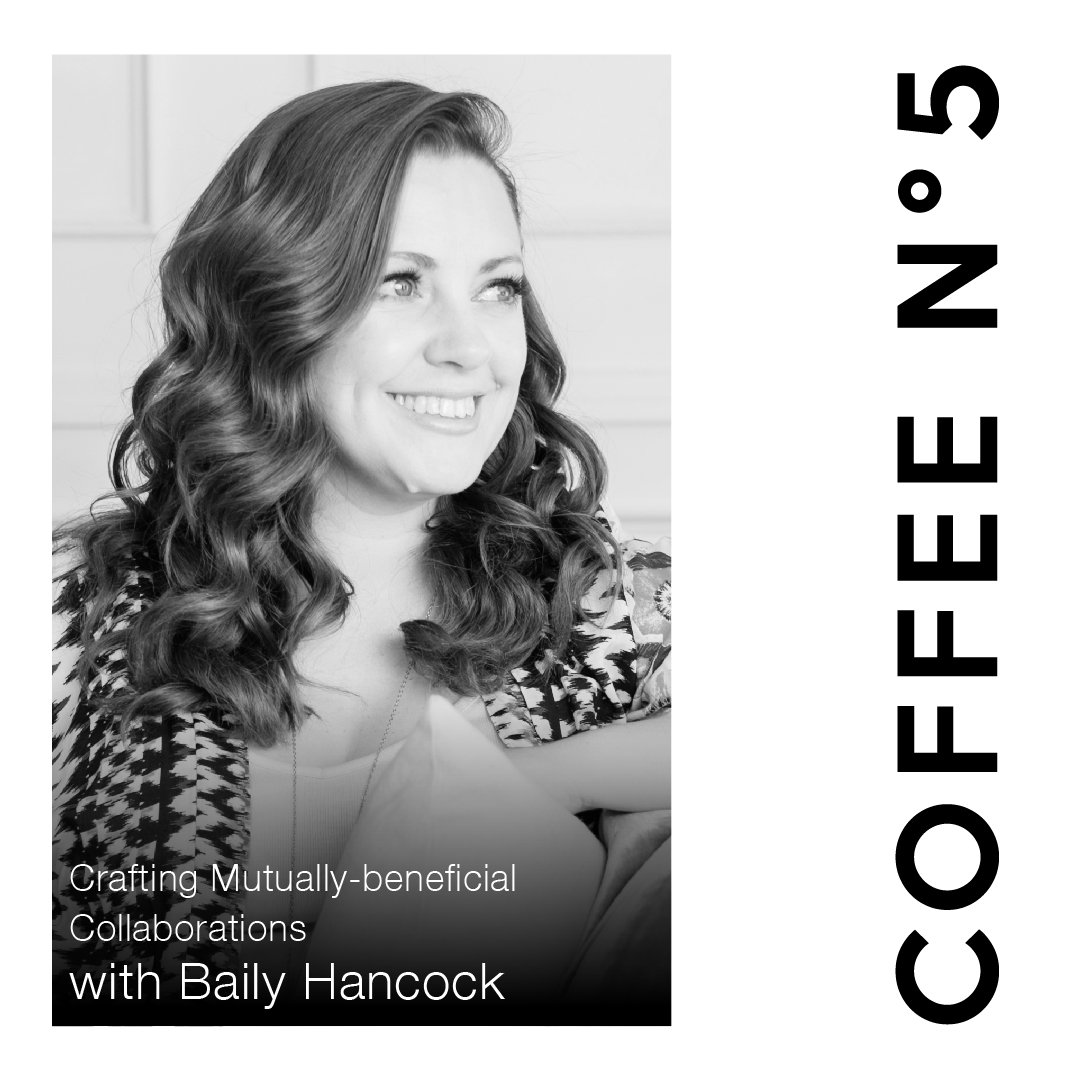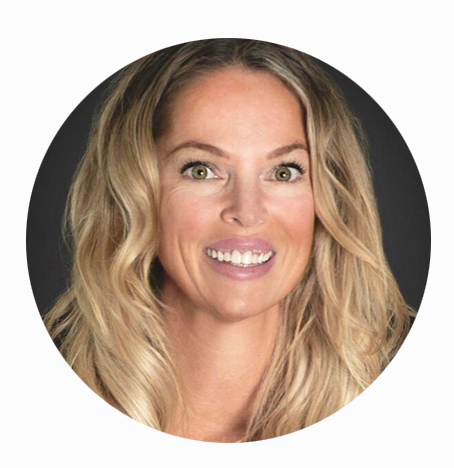Lara Schmoisman
00:05
This is Coffee Number Five. I’m your host, Lara Schmoisman. Hello, guys. Welcome back to Coffee Number Five. And today, I have a special treat for you. So I was at Napa Valley at an event called Innocos. It was fantastic. And I met this guy, and he gave a fantastic presentation, and I was okay. I need to have him on the podcast. I was so impressed, and you know me, that I’m all over the place, and it’s really hard to have me sitting down and listening, and Pascal impressed me. So here we are. Thank you so much, Pascal, for being here with us today. How do we pronounce your last name first?
Pascal Houdayer
00:51
Oh, I’m french. I’m from Paris. And you say “Houdayer”.
Lara Schmoisman
00:57
Okay, with my Spanish accent doesn’t help. So anyway, Pascal, give us a little more a story about you, because you’ve been. You’re a founder, an investor, you were a board member. You did so many things in different countries, and I will say in different planets also. But tell us a little more about your backstory and where you are today.
Pascal Houdayer
01:23
First of all, thank you, Lara, for having me on your podcast. It’s a big honor, and I’m very humbled by what you said, and I’m very honored by what you said, because we met, indeed, at the Inno Coast Napa Valley event, and we connected very well. My background is, I started in France in the pharmacy and beauty industry. Then I worked for Proctor and gamble for 20 years. That’s where I learned a lot about marketing, about putting the consumer at the center. And in these 20 years, PNG moved me from France to Geneva in Switzerland, then to Cincinnati in the US, then to Casablanca in Morocco. And I’ve done some roles in marketing and general management.
Pascal Houdayer
02:11
And then after that, I was hired by Henkel with a german company to lead their home care business and became the CEO of the beauty care business from Enkel, which is mainly the Bren Schwarzkopf. After that, I came back from Dusseldorf in Germany to France to be the CEO of a company called Naos, who is a leader in dermal cosmetics, with the brands like Bioderma or institue est derm, which is specialized in spas and salon business. And after that, for the past six years, I worked for private equity in the US, and I founded, you know, a company called Orwein Global, which is encompassing three brands of makeup. One is Laura Mercier, the other one is bare minerals, and the last one is buxom.
Lara Schmoisman
03:05
Wow. Little runs. Little runs. I am so honored that you’re here and with your trajectory, which is incredible and something were talking before the podcast and it was about understanding what is your placement as a brand, not only who, understand who is your target audience. So what comes first when you create a brand or you’re thinking of creating a brand comes first, who is the target audience or where you want to place what you think that is the right evolution of creating a brand?
Pascal Houdayer
03:39
I would argue that none of that comes first.
Lara Schmoisman
03:42
Okay.
Pascal Houdayer
03:43
I would say that before the who and the how, there is the why. And as a founder, I’m always very impressed to meet young founders of independent brands in skincare, in hair care, in makeup. And what is very important is why they created this brand. What is the reason for being of this brand? And once you have this reason from being this vision for your brand, then you know the who, the what and the how becomes almost natural. So, for instance, we’re talking about your brand of skincare infused, which is fantastic. And when you’re going to make me flash last.
Lara Schmoisman
04:33
But no, but it’s so true. I’m so glad that you bring this up, because the why is essential for any brand. And there are so many brands that they get lost because they don’t know who they are.
Pascal Houdayer
04:46
And that’s the point. So if we take skincare, for instance, you have so many different positioning of skincare brand. A mass skincare brand is different from a dermal cosmetic brand, which is different from a luxury skincare brand. And that is basically driving your placement and the retailer where you’re going to partner with. For instance, if you’re a mass skincare brand, let’s say ule from PNG Yulet would basically naturally be a point of market entry for skincare, you know, consumers. And you would partner with the Walmart, the Kroger, or the Tesco or carpool in Europe. Now, if you’re a dermo cosmetic brand, that means a brand which is having a medical positioning like La Roche, Posay or bioderma or Aven. Then naturally your partners would be pharmacy channel, that would be CV’s, Walgreens, or Rite aid in the US.
Pascal Houdayer
05:44
But you would rather not go, for instance, in Walmart, that would be a different partner. And if you’re a luxury skincare brand, if I take Sk, two from PNG or La Prairie from Estee Lauder, your partners will be department stores. You would go in Macy’s, in Bloomingdale’s, in north Rome, and sometime with Ulta and Sephora, but you will not go in other partners. So the why is driving the who, which is driving the how.
Lara Schmoisman
06:15
Absolutely. And that also is something that you need to be very in line when you create your formulation to make sure that those products attach with your why with your values also, but also to your target audience.
Pascal Houdayer
06:33
Yeah, of course. I mean, if I go back to see this example of skin care, if you have a mass skin care product, you will probably not have the same demandingness in terms of clinical testing as a Dermo cosmetic brand, because the claims that you would do of moisturizing in a mask in care brain are different, for example, to psychiatrization post sherlock holperation that you have with a certain product in medical positioning. So that’s why actually, you know, it’s very important.
Lara Schmoisman
07:08
It is very important. And because I people think, and this coming from the marketing side and working with several smaller brands, that you can just put a claim out there because you think that it works and it’s not how it works. You need to be very careful with claims.
Pascal Houdayer
07:26
And on top of that, the people, the consumer or the patient, they are very intelligent and they are now having access to more and more knowledge through social media. So if you’re claiming a certain benefit, a functional benefit, for instance, plumping, you know, your skin to remove wrinkles and people use it for a week or two weeks and they don’t see the functional benefit on their skin, they will not repurchase you.
Lara Schmoisman
07:57
Absolutely.
Pascal Houdayer
07:57
So you might have, you know, awareness and trial, but you will not have repurchase rate and as a consequence, your brand will not grow.
Lara Schmoisman
08:05
That I always tell all my clients that customer retention is as important as bringing new clients. Or even more important because having a customer that comes over and comes over because they’re happy with your products, it’s amazing.
Pascal Houdayer
08:21
Yeah. Your loyal user base is basically your number one advertiser. I mean, they do word of mouse, they can be micro influencers and they are genuine. So it’s very important for your brand, especially at the early stage.
Lara Schmoisman
08:38
Something is very interesting to me is that you’ve been working in so many different markets and sometimes brands, they don’t translate well from one market to another. So how you tackle that problem? I was talking yesterday with a brand in Latin America and I was like, if you want to come to the US market, we’re going to have to do rebranding this mark with that price point. It’s not going to be compete well in the US.
Pascal Houdayer
09:06
No, you’re totally right, Lara. A lot of reason for failure of geographic footprint expansion is the belief that what worked in one country will automatically work in another country. And this is wrong. Why? Because the culture is different, the future is very different. Because second, the reason to believe the benefit, which are most of the time ingredients are different. So sometimes, you know, an ingredient that is well known in the US will be totally unknown in Japan or in China and vice versa.
Pascal Houdayer
09:47
And as a consequence, you know, as a brand leader or as a founder, you need to make sure you have the humility to learn and to listen to consumer in the market where you want to enter and maybe not to rebrand your brand, but to adapt your lineup, to adapt your product in order to be relevant and connect and resonate with a local consumer.
Lara Schmoisman
10:14
Absolutely. It’s so important. Maybe you don’t need to try with your whole lineup. You start with a few key products that you feel like it will resonate better with the audience and then you can start introducing other products.
Pascal Houdayer
10:28
Exactly.
Lara Schmoisman
10:29
And I’m having that challenge, even with my brand, that I chose a very unique ingredient and that is not well known in the US and it’s a fight that I chose to tackle. But I know what to expect and that you’re going to have to do a lot of teaching and if you bring in something different to the market, you need to create a whole like parallel campaign on educating.
Pascal Houdayer
10:56
Yeah, and it has pros and cons. But you know, first the pro is that you have a clear point of difference and because you have a clear point of difference, you stand out versus the competitive set. The potential, you know, hurdle to overcome would be to create awareness on this specific ingredient. And that’s where education is important and that’s where, you know, partnering with magazines, with influencers, with credible endorsers is very important to create this awareness that your brand would benefit, you know, as a second, in a second step.
Lara Schmoisman
11:39
But also it’s not only educating the audience, you need to educate your partners. I always say that when as a new brand, you need to create not only your marketing materials for the d two C, you need to create marketing materials for retail.
Pascal Houdayer
11:56
Yeah. And where you’re so right, Lara, is that the moment that your retail partners are convinced about your why and your benefits and the reason to believe of the benefit which is your unique ingredients, they became your advocates. Absolutely. They have far more power than you because of the number of doors they have in physical stores or because they have the power to advertise on their website platform to a broader audience.
Lara Schmoisman
12:27
Yes, but if you are in physical stores, then you have a different challenge when you bring a new brand with new ingredients that you need to educate the sales team in those stores. I talk to so many brands and their goal is, I gonna go retail. And yes, I’m gonna be in all these stores and I wish that it happens to them, but they don’t understand that if your brand doesn’t go to retail too early, it might be like in one time thing and they’re gonna say, we don’t know how to sell it, so it’s not gonna sell and you’re gonna get kicked out.
Pascal Houdayer
13:05
Yeah. No, but you’re so right. When you look at, for example, some of the makeup or skincare industry in the US, the biggest part of your budget is put in what we call education and artistry ahead of social media, because nothing replaces the moment where a woman enter a store and is doing shade matching to make sure she has the right shades of foundation and makeup. And when she’s convinced by this physical education from a person that you have been educating on your brand, most of the time, if the product delivers, she stays loyal for life. So it’s a very good investment in order to turn a trialist into a lifelong loyal.
Lara Schmoisman
13:50
Yeah. So how would you suggest that you educate brands about. Not brands, retailers, about new brands. What kind of you create a brand book, you go visiting stores.
Pascal Houdayer
14:08
It’s pretty codified, to be honest. So you indeed need to basically start by your strategy and put that in a way that is easy to communicate. One way can be indeed a brand book. It’s pretty rigid. Nobody likes to read a book, to be honest.
Lara Schmoisman
14:25
Nobody.
Pascal Houdayer
14:26
But it’s a basic. The second is to have your own education and artistry. Team doesn’t need to be big. Sometimes when you’re a founder, it’s yourself basically go and educate. When you have a bit more money, you can basically hire some people who basically feel in their DNA, your brand. And after that you have, you know, some forums, depending on your partners, where you can educate either the national teams or the local teams or sometimes the regional teams. So it means that you’re going to need to do a road show, especially if you manage to be listed in a great partner in beauty, like Ulta, for instance, that have so many doors throughout the United States.
Pascal Houdayer
15:10
But it’s really worth it because if you manage to convert a lot of this, you know, beauty associates in the stores, then you know, it’s going to drive your brand, you know, awareness and trial.
Lara Schmoisman
15:21
Yeah, and that would be amazing for, it’s a dream for any brand owner, but it’s not realistic to think that you can start like that. You need to start small.
Pascal Houdayer
15:34
You need to start small. And most of the time, you know, when you are small in this brand, very few big retailers will list you in the totality of their $600 nationally. They might tell you, okay, we’re going to do a test in one city with a few doors or if you’re lucky, in one state. So you can basically educate the people, physically, yourself and make it work. And then, you know, when the test is successful, you have national or, you know, multiple state expansion and your turnover is growing at that moment. You can hire people and then you enter into a virtuous cycle. This is what I hope for every founder.
Lara Schmoisman
16:15
Absolutely. Me too. But also it’s really important to be a clean head when you start your brand and be realistic at what you expect, because also retail is going to expect that you can give them some proof and say, hey, I’m selling in d, two, c. This is what people say. You need to have all that brand awareness. You cannot think that. And it’s an investment. Everything costs money. So you’re going to be able, you need to make sure that the day that you’re going to be knocking at doors in retail, they. You have all this proof.
Pascal Houdayer
16:47
Yeah. The usual pattern that I’ve been observing from, you know, independent brands is that they start most of the time with their own direct to consumer website as step one.
Lara Schmoisman
17:02
Yep.
Pascal Houdayer
17:02
And they create a certain level of awareness because they have a great reason why we talked about the brand mission, or because they have a great benefit, functional benefit or emotional benefit, or because they have a unique ingredient like your brand infused. So at the end of the day, when you do that on your direct to consumer, you create a certain level of awareness. Then the step two, most of the time is not to go and break and mortar, but to have one e commerce platform that believes in you and is willing to partner with you. So doesn’t need to be Amazon, that could be another one, could be ethora.com, could be ulta.com, could be others. And then you basically create even more awareness and trial. And once this is done, the step three becomes, you know, physical stores.
Pascal Houdayer
17:50
Most of the time, you know, a partner. Sometimes when you have a broad enough portfolio, you can try even your own store as a test, but very rarely you make it break even. So it’s more difficult because, you know, you cannot bear the cost alone. That’s why going with a partner is always something which is preferred.
Lara Schmoisman
18:13
Yeah, well, I early on also you talked about another path. We talked about what doctors, office, medical spas. That’s another completely different path. And it’s not that you can approach the retail layer in this case, but.
Pascal Houdayer
18:28
That approach cannot be followed by brands which are not really dermal cosmetic brands. This approach cannot be followed by mass skin care or by luxury skincare. You really need to have a positioning products that are developed with dermatologists or with pharmacists that are basically moving from beauty to wellness and wellness to health. And most of the time, this brain also have in their portfolio medical devices which are not, you know, which are over the counter still, but are not simple skin care, which are only moisturizing. So if you don’t have this type of credible approach, you cannot go to medical professional who basically will endorse you. So it’s a. It’s a different market, but it’s an amazing market. And with aging population and post Covid, this is a territory that we see is growing faster than actually mascare and premium skincare.
Lara Schmoisman
19:30
Let’s talk about the channels of distribution for more derma or more medispa. In that case, it’s not that you have a distributor necessarily. You need to go more having sales consultants, medical office. How do you work that space?
Pascal Houdayer
19:47
It’s again, a very different approach, which is linked to the positioning of your brand. When you’re a dermal cosmetic brand, you start by first, you know, in each country, having some medical experts, most of the time, dermatologists that are well known, that are willing to publish with you some very strong medical papers that are basically helping, you know, research, etcetera. Once you’ve done that, you credibilize your brand name and you need to be present in the big dermatology conferences like the AAD, for example, in the US, is very important. So you have a boost there. And you explain your brain to dermatologists first. Yeah, you don’t go in tv, you don’t go in digital media. You talk to dermatologists. So publication first. Number two, you know, going in conference with dermatologists.
Pascal Houdayer
20:42
And then number three, then you start to hire, indeed, not a sales force, but medical visitors.
Lara Schmoisman
20:49
Yes.
Pascal Houdayer
20:50
Most. Most of them have followed some pharmacy education so that they can talk technically to dermatologists about the formula, which are having some specific ingredients. And then after that, you go to the pharmacy channel, the CV’s, the Woodgreens, etcetera, the Johan Reed of this world, in order to have a very specialized go to market.
Lara Schmoisman
21:12
Very interesting. And what if you have a luxury brand that it’s for medical pass and.
Pascal Houdayer
21:19
For a luxury brand. As we talked, you know, he needs to be in a go to market, which is high end. So you will find that. You will find them in high end department stores like Bergdorf, Google, Woodman, or Stax or Macy’s. Some of them are big enough to have their own boutique with a lot of consultants that basically will analyze your skin and give you an ultra personalized, you know, cleaning treatment for your skin, which is very important with a lot of derm tech using a lot of beauty tech to do that. And some of the brand would go to Ulta or Sephora, but will not go down the trade, as we say, because then it would be a positioning issue.
Lara Schmoisman
22:18
Yeah. Do you think that it’s a positioning issue to be in ultra, but also to be in medical offices or into spas?
Pascal Houdayer
22:29
I don’t think so. I believe that in the nineties, you know, you had very strong chinese wall and boundaries between them. But now, you know, as I mentioned, beauty is evolving to well being and well being to health. So these boundaries are collapsing a bit more. So it would not be uncommon to see a dermal cosmetic brain in ulta, for instance. And it does not jeopardize their medical positioning as long as they have the space to communicate their uniqueness, their concept and their reason for being so. No, we see that more and more everywhere in the world.
Lara Schmoisman
23:12
That’s absolutely true. I was thinking, because I went to a conference last year and someone was saying, if you have your brand in the US, don’t expand to other countries too soon. And I was questioning why. I mean, they said the US and then maybe Canada is big enough. And I was like, not necessarily. I think you can find maybe other markets that are more open to your brand and then you can start, or they have the need for your brand at this point and then you can have better case studies. What’s your take on this? When it’s too soon to explore other.
Pascal Houdayer
23:54
Territories, it’s difficult to generalize and it really depends on which category you play with. What is your point of difference? Do you have something very unique that can basically enable you to be successfully develop a geographic footprint expansion? Where I would agree is that if you launch your brand first in the US, you need to reach a certain critical mass and proof of concept in the US first, so that you can take your operating model and translate it in a different environment. Pretty easy to move from the US to Canada, even though the french parties are different. I’m not saying that because I’m french. But it’s true. I did my MBA in York University in Canada, in Toronto.
Lara Schmoisman
24:42
No, no, it’s very different. It’s different. Even Canadians are from one side and the other. It’s a different country, almost.
Pascal Houdayer
24:50
So. But then after that, you can. You can think about, you know, launching in the UK, which is the first, you know, food, into Europe. After that, you could think about Australia and New Zealand as a first step to Asia. But then, you know, it’s very different to launch a brand in Australia than to launch a brand in China or in Japan. So indeed, you know, it’s difficult to judge. It’s linked. I would say proof of concept and critical math needs to be done in the first market before, because if not, you’re diluting and you spread yourself too thin in terms of investment and you lose in your home market and you lose in the expansion market because you don’t have the means to win there.
Lara Schmoisman
25:34
Absolutely. There are a lot of younger brands that their mind is set that they need to fundraise, fundraise. And they keep fundraising. I have my personal thoughts about that, but I would love to hear yours. How important is fundraising and really how much you should give away from your brand?
Pascal Houdayer
25:59
It’s difficult, again, to give a very definite point of view. There you have examples of success of brands who have basically raised a lot of equity in order to make them successful, and some other brands in the same category who raised the same amount of equity and were failure and went bankrupt. For me, the question is not too much about the equity you raise, but it’s on the first part of our discussion, which is, why do you exist as a brand? Why should you be there if you are only a metoo with a fake storytelling? You will not survive whatever the money you inject on your brand. So I think that, you know, it’s like the dog, you know, beating his own tail. At the end of the day, it’s not the equity you inject.
Pascal Houdayer
26:49
It’s about the uniqueness of your product, of your services or your experience, but.
Lara Schmoisman
26:55
Also it’s about the plan of how you use the money that you raise, for sure.
Pascal Houdayer
27:02
But, you know, okay, you got my point.
Lara Schmoisman
27:06
Yeah.
Pascal Houdayer
27:07
If you use your money smartly on a concept which is wrong, you will fail.
Lara Schmoisman
27:12
Yes.
Pascal Houdayer
27:13
And I would argue that if the right concept you have and you use your money not in the optimized way, you have a better chance to win.
Lara Schmoisman
27:22
Okay, let’s explore a little bit more on that. Give me an example.
Pascal Houdayer
27:27
No, the point is that, you know, when you found the brown. If you have a great idea which is unique or a great ingredient, and you’re passionate about it, and you can basically develop it. If you get some equity injection and you’re not an expert in marketing or in brand amplification, you learn your way and you’re not spending your money in an optimized way. If your concept is great, you have higher chances of winning, of course, than if your concept is wrong.
Lara Schmoisman
28:00
Absolutely.
Pascal Houdayer
28:02
And you spend your money rightly. That’s my only point.
Lara Schmoisman
28:04
Yeah, no, and I’ve seen this so many times. I always see all these founders trying to work so hard on doing an Instagram post instead of doing what they need to do with Iran. And I feel like their time is. There’s so much waste there. As a founder, you need to use your time wisely. And one of the most important thing is to partner with the right people and the right.
Pascal Houdayer
28:28
I would argue, as a founder, you need to embody the values of the company.
Lara Schmoisman
28:34
Absolutely.
Pascal Houdayer
28:34
You need to role model the mission. If you’re a sustainable brand and you’re not, as a founder or a CEO, embodying the values of the brand, the consumers for social media can very fast know who is behind the brand, what is the life of the founder, and then they’re gonna discover it’s fake, and they will not follow you anymore. So I want to underline the point of authenticity.
Lara Schmoisman
29:03
Totally. It’s really important that I think right now, for new brands, the founder story is so important to embrace. And it’s not only the story of the brand is the founder that aligns with the brand. It’s not that you can say my brand has oranges, but I don’t like oranges. You need to make sure that you’re walking the talk.
Pascal Houdayer
29:28
Exactly. Exactly. And, you know, that’s why the first thing that I looked at when I founded the orvian company in 21 was, what were the vision and the values that I wanted for this. This portfolio of maker brand, and make sure that the people that I was hiring would embody and role model this value. And if they were not, I would make sure that I would coach them and develop them so that they do it, because it’s so important.
Lara Schmoisman
30:00
So important. Well, Pascal, thank you so much for being here today to have coffee with me. I really enjoyed this, and I can keep talking to you for hours. So next time in real life, coffee.
Pascal Houdayer
30:12
That was a pleasure. Thanks a lot, Lara. And I look forward to seeing you soon.
Lara Schmoisman
30:16
Yeah. And to you guys, we will see you next time with more Coffee Number Five. Find everything you need at laraschmoisman.com or in the episode notes, right below. Don’t forget to subscribe. It was so good to have you here today. See you next time! Catch you on the flip side. Ciao. Ciao.








